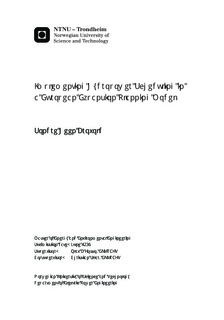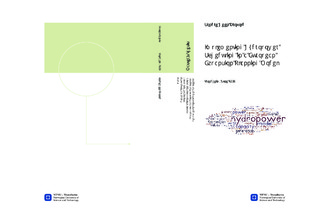| dc.contributor.advisor | Fosso, Olav B | nb_NO |
| dc.contributor.advisor | Skar, Christian | nb_NO |
| dc.contributor.author | Brovold, Sondre Heen | nb_NO |
| dc.date.accessioned | 2014-12-19T13:56:44Z | |
| dc.date.available | 2014-12-19T13:56:44Z | |
| dc.date.created | 2014-11-13 | nb_NO |
| dc.date.issued | 2014 | nb_NO |
| dc.identifier | 762916 | nb_NO |
| dc.identifier | ntnudaim:11820 | nb_NO |
| dc.identifier.uri | http://hdl.handle.net/11250/258092 | |
| dc.description.abstract | This Master s thesis proposes a method for implementing an enhanced hydropower planning formulation in a long-term expansion planning model. The motivation for this work is the important role that hydropower plays in a generation investment environment. In a time where penetration of intermittent renewable energy sources like wind and solar power is heavily increasing, new challenges in the continuous balancing of supply and demand are also introduced. Hydropower and its use of reservoirs as power batteries can respond more or less immediately to such fluctuations. As such, a detailed framework for hydropower scheduling is highly relevant.The presented implementation is carried out in an already-existing expansion planning model for Europe called EMPIRE, which is written in Mosel Xpress. This is a two-stage stochastic optimization model whose objective function is to minimize the total net present value of expected operational costs and investment costs for generation and transmission capacities.The main feature of the proposed framework involves penalization of hydropower through water values. This necessitates a complete hydropower scheduling representation where each reservoir is divided into segments which are assigned a fictitious marginal cost. The inclusion of water values enables comparability with the short-run marginal cost for competitive technologies and introduces the important aspect of conserving water for other periods of the year. Data from SINTEF Energy Research has been used for this purpose.Results from optimization runs in the time span from 2010 to 2060 for an EU 20-20-20 like policy scenario show that the original hydropower availability is too relaxed, thereby causing an overvaluation of this technology. The revamped cost representation by means of water values leads to a lower utilization of hydropower relative to the original model. An earlier deployment of solar power is carried out to replace the lower generation, with a capacity difference between the final and original models peaking at 45% in 2040. Total costs in the system are therefore increased. For both models extensive investments in intermittent renewables are taking place, amounting to 47% of the total capacity in 2060. | nb_NO |
| dc.language | eng | nb_NO |
| dc.publisher | Institutt for elkraftteknikk | nb_NO |
| dc.subject | ntnudaim:11820 | no_NO |
| dc.subject | MTENERG energi og miljø | no_NO |
| dc.subject | Energi og samfunn | no_NO |
| dc.title | Implementing Hydropower Scheduling in a European Expansion Planning Model | nb_NO |
| dc.type | Master thesis | nb_NO |
| dc.source.pagenumber | 204 | nb_NO |
| dc.contributor.department | Norges teknisk-naturvitenskapelige universitet, Fakultet for informasjonsteknologi, matematikk og elektroteknikk, Institutt for elkraftteknikk | nb_NO |

